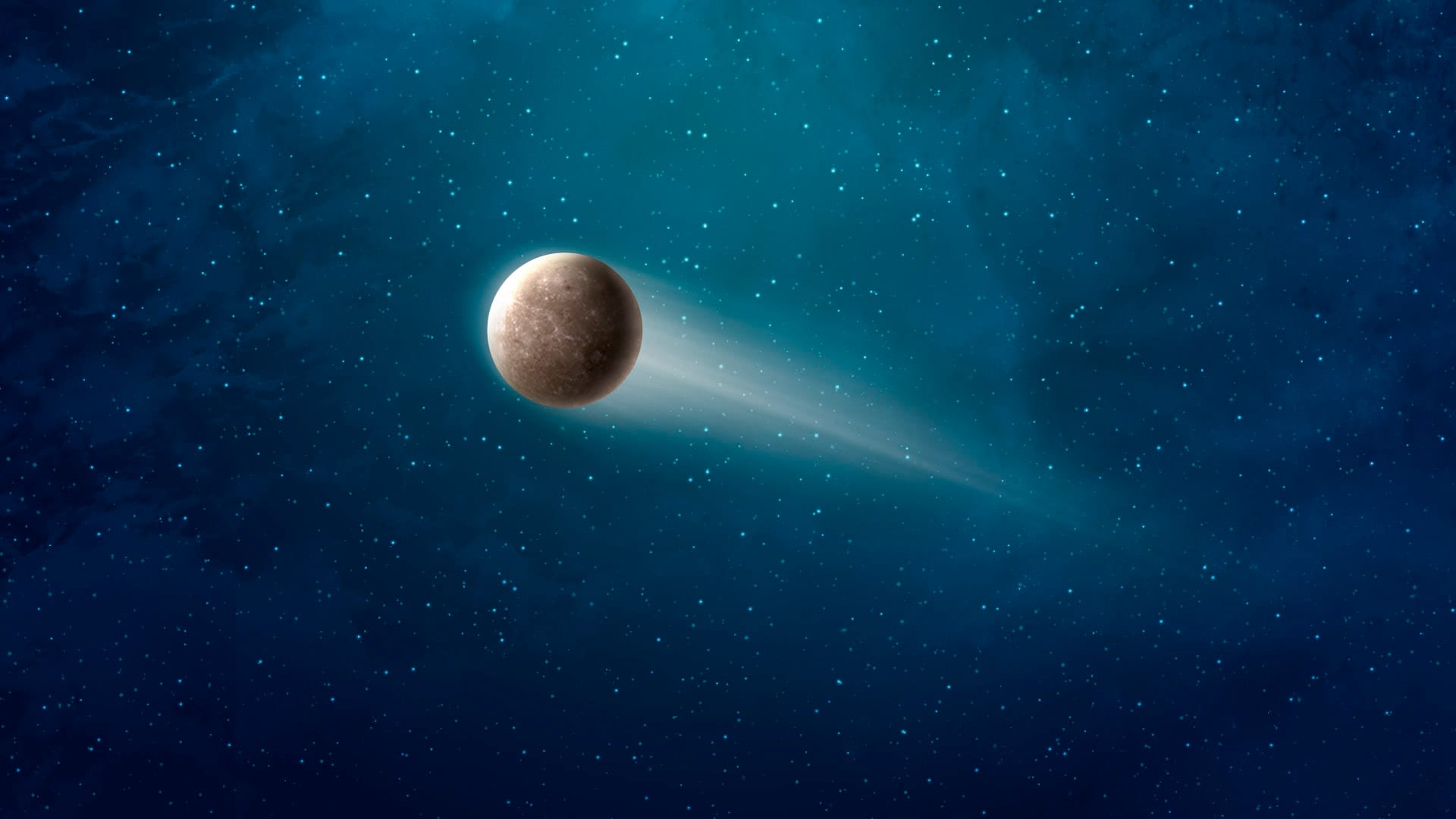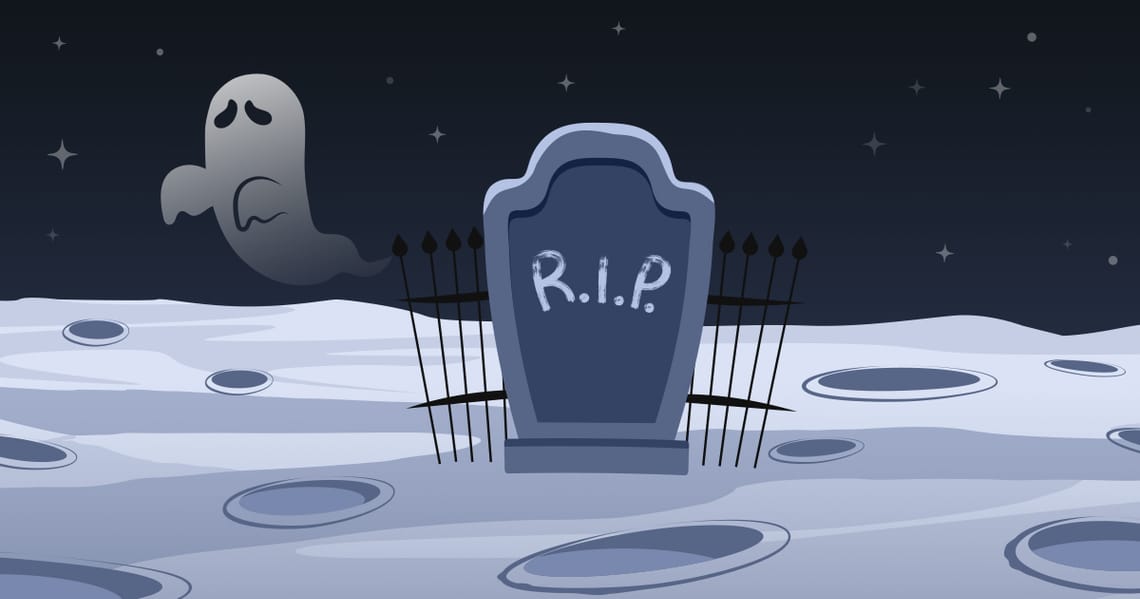Top 10 Facts About Space You Probably Didn’t Know
Have you ever wondered about the amazing and strange things that exist in the vastness of space? Since we’ve only scratched the surface of the universe, there are countless mind-blowing facts that reveal just how much we still don’t know. Read on as we explore 10 crazy space facts that will leave you in awe. And to dive deeper into the world of stars and planets, make sure to download Sky Tonight – your ultimate companion for stargazing and exploring the universe in real time!
Contents
- Mercury has a tail
- There is a man buried on the Moon
- There is a planet likely made of diamonds
- Saturn has a hexagonal-shaped storm
- There is a huge cloud of floating water in space
- LEGO figures were sent to orbit Jupiter
- Neptune has only completed one orbit around the Sun since its discovery
- A wedding ring was lost – and then found! – in space
- Spacecraft have visited every Solar System planet
- There are more trees on the Earth than stars in the Milky Way
- Bonus: 10 more facts about space
- Fun facts about space: bottom line
Mercury has a tail

Many people know comets have tails. But have you heard about a planet that has one? Mercury has a cometlike tail produced by the solar wind that pushes off sodium atoms from the planet’s surface. It’s not easy to see: you’ll have to take a long-exposure photo using a telescope and a special filter.
Time is also essential: the tail is brightest within 16 days of the planet’s perihelion. If you decide to try your luck (and will find the equipment needed), the Sky Tonight app will help you choose a good day. First, find Mercury using Search (magnifying glass icon at the bottom of the screen). After tapping on the corresponding result, go to the Events tab. You will find a list of all upcoming Mercury events, including perihelion.
There is a man buried on the Moon

Eugene Shoemaker, a co-discoverer of the famous Shoemaker-Levy 9 comet, was the founder of astrogeology and was set to be the first geologist to walk on the Moon. Unfortunately, health issues prevented him from flying to the Moon during his lifetime. Instead, he trained Neil Armstrong and other astronauts for the Apollo missions. In 1997, searching for undiscovered impact craters, he went to Australia, where he died in a car accident. In honor of his contributions to planetary science, his ashes were carried to the Moon aboard NASA’s Lunar Prospector Orbiter. For now, he remains the only human buried on the Moon.
Lunar burial is not the only mind-blowing thing associated with our natural satellite. Check our infographic to learn even more mysterious Moon facts.

There is a planet likely made of diamonds

An exoplanet 55 Cancri e, located 40 light-years away from us, might be covered in diamonds. Sounds nice, but you wouldn't want to visit it anyway – unless you like to sunbathe at 2400°C (4400°F) and breathe hydrocyanic acid. As scientists assumed, 55 Cancri e is bound to a star with a high carbon-to-oxygen ratio, which led to the formation of a carbon-rich planet (and diamond is a solid form of carbon). The research team suggests that at least a third of the planet’s mass (about three Earth masses) could be diamond. Further studies are needed to support the theory. If it proves to be true, it would mean 55 Cancri e hosts diamonds worth about $26.9 nonillion ($26,900,000,000,000,000,000,000,000,000,000).
Saturn has a hexagonal-shaped storm

Saturn’s north pole hosts a multilayer storm with an unusual hexagon shape. It was first discovered in 1981 by the NASA Voyager spacecraft. Later, in 2006, the Cassini spacecraft provided more detailed images and data. It revealed that the storm is about 300 km (190 mi) tall, 29,000 km (18,000 mi) wide, and is possibly composed of atmospheric gases moving at about 320 km/h (200 mph). The hexagon's sides are about 14,500 km (9,000 mi) long – 2,000 km (1,200 mi) longer than the Earth's diameter! It also changes color over Saturnian seasons – it is golden in summer and blue in winter.
There is a huge cloud of floating water in space

We know the Earth may not be the only space object with water. For example, Europa (one of Jupiter’s moons) is thought to have an ocean that may contain twice the volume of water found on our planet. However, the largest reservoir of water in space is floating around a quasar – a luminous supermassive black hole – 12 billion light-years away from us. It is a cloud of water vapor that covers hundreds of light-years and contains 140 trillion times more water than the world's oceans.
LEGO figures were sent to orbit Jupiter

To get kids interested in science and space exploration, LEGO made three minifigures that were placed on the Juno space probe sent by NASA to explore Jupiter. The LEGO “crew” includes Galileo Galilei, who discovered the four biggest Jovian moons, the god Jupiter himself, and his wife Juno after which the mission was named. The minifigures have no moving parts; they were cast of spacecraft-grade aluminum designed to withstand the harsh conditions of space flight. By the way, they are still orbiting the planet – the Juno mission was extended to September 2025.
Neptune has only completed one orbit around the Sun since its discovery

Neptune is the outermost major planet that was discovered in 1846. It was the first planet to be found with the use of mathematics: astronomers noticed that Uranus deviated from the predicted orbit, which allowed them to assume the existence of another planet and then find it. Keep this fact in mind: you’ll need it to ace our Firsts in Space quiz.

Neptune is so far away that it can only be observed with optics. As it’s farthest from the Sun, it also has the longest orbital period: a year on Neptune lasts 164.8 Earth years. That’s why it only completed one post-discovery circle (it was in 2011).
A wedding ring was lost – and then found! – in space

On the second day of the Apollo 16 lunar mission, command module pilot Ken Mattingly realized he had lost his wedding ring. The whole crew tried to find it all over the spacecraft. On day nine, it was finally spotted floating out the hatch door while Mattingly was in the middle of a spacewalk. Another astronaut, Charles Duke Jr., noticed the ring and tried to grab it but failed. Fortunately, it bounced off Mattingly's helmet, and Duke caught it. Just imagine: a small ring was nearly lost in the endless cosmic depths. By the way, people have already left many things in space – there’s even a toothbrush floating out there.
Spacecraft have visited every Solar System planet

Humanity has been exploring space for more than 60 years. That’s not so long (in terms of the universe). Over this period, our spacecraft have visited all of our Solar System's planets, including the dwarf planets. Our probes have landed on Mars and Venus and orbited Mercury, Jupiter, Saturn, and Ceres. NASA’s Voyager 2 flew by Uranus and Neptune, and the New Horizons probe approached Pluto.
Besides important scientific data, spacecraft provided us with many photos of other planets and their moons. Can you guess which planet's landscape is on your screen? Test both your knowledge and intuition with our quiz!

There are more trees on the Earth than stars in the Milky Way

You must’ve heard that there are more stars in the universe than grains of sand on the Earth. We know that the cosmos is large, so it doesn’t sound surprising. But it’s hard for us to believe that space can be inferior to the Earth in some way. Strange as it may seem, it is true, at least if we take not the entire universe but only our Milky Way galaxy. At a rough estimate, the advantage is obvious: there are from 100 to 400 billion stars in the Milky Way and more than 3 trillion trees on our planet.
Bonus: 10 more facts about space
Space is filled with so many mind-blowing phenomena, many of which seem obvious once you think about them but rarely get the attention they deserve. It’s hard to narrow it down to just ten – there’s so much more to discover! Here are 10 more fascinating facts about space, presented briefly with links for further exploration.
- Planets, stars, and other visible objects represent less than 5% of what is in space. The rest consists of dark matter and dark energy, which we can’t observe directly.
- The asteroid belt between Mars and Jupiter could be the remains of a planet that never formed.
- The darkness of the night sky, something most of us take for granted, was once considered a puzzling phenomenon known as Olber’s paradox.
- Astrophotography has been around for over a hundred years: the first images of celestial bodies were captured as early as the late 19th century.
- If the entire history of the universe were compressed into one Earth year, the Moon landing would have occurred at the very last second of December 31st.
- There are so-called dead comets, which have no visible coma or tail but still exist in space as solid bodies.
- You’re about 30 times more likely to die from choking on food than from an asteroid impact.
- The temperature difference between the coldest and hottest object in the universe is more than 138,000 °C.
- Venus has phases just like the Moon, and surprisingly, it’s brightest when half-lit, not fully illuminated.
- The dwarf planet Pluto has 5 moons, which is actually more than some of the planets in our Solar System.
Fun facts about space: bottom line
Space is full of wonders that continue to captivate our imagination. Some of these marvels are the result of our own discoveries and achievements, showing just how far human exploration can reach. If you’re eager to explore the night sky yourself, Sky Tonight is the perfect app to guide you on your celestial journey. With detailed star maps, real-time data, and easy-to-use tools, you’ll be able to track planets and stars right from your phone. Start your stargazing adventure today!
